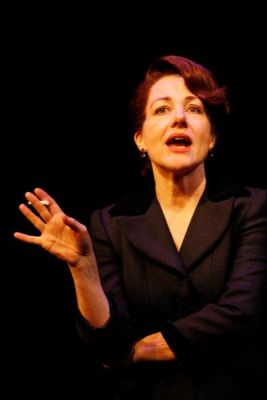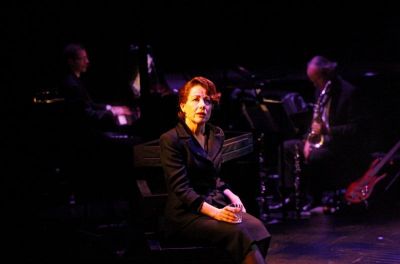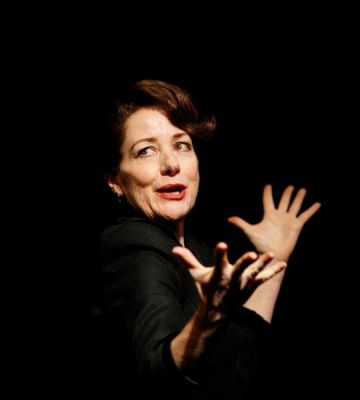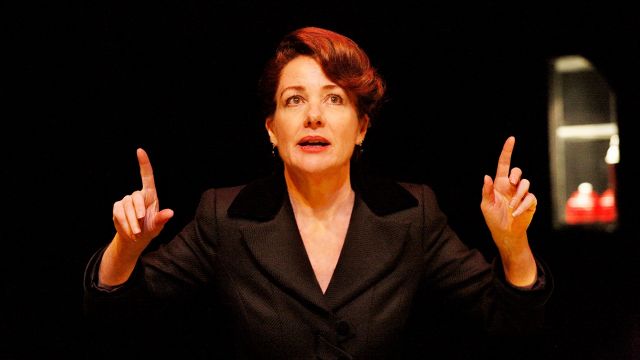Brushes With Fame: From Judy Garland to Maria Callas.
Have you ever had a chance meeting with a show business superstar? A hit show on the subject, first produced by the Melbourne Theatre Company, is about to tour Australia. It’s about five anonymous women and their separate brushes with iconic divas Judy Garland, Patsy Cline, Billie Holiday, Edith Piaf and Maria Callas. The show is called Songs for Nobodies and was written by Joanna Murray-Smith especially for the performer Bernadette Robinson.
On the eve of its Sydney’s opening, Bernadette Robinson spoke to Neil Litchfield.
NL: While you are singing as the various divas you’re well known for, this isn’t a play about them is it?
BR: No it’s not. There are five separate monologues for five little nobodies - completely different women, from different times and different countries – and how they’ve each had some kind of brush with a great star.

In the first one, set in the 1960s, Bea is a little ladies room attendant, who happens to be working at the Plaza Athenee in New York the night that Judy Garland comes in after her performance at Carnegie Hall. She and her husband had split up that night. It’s sort of about that, but having Judy Garland come into the toilets and talk to her. So it’s the interplay between the two.
They’re all similar in that way, in that the character has something to do with the star. For instance, there’s Edie, an English librarian whose father was rescued during the war by Edith Piaf, so that comes into it because Piaf’s songs come throughout the piece. The last one is an Irish nanny who happens to be on the Christina O when Onassis is onboard with Maria Callas, when that affair is flourishing.
I just jump between each one. The divas are woven into the story. I’m always in the same costume right through. I just do it with my face, and voice and body. Some of the divas don’t get to speak. Maria Callas just gets to sing at the end. Piaf speaks a tiny bit, but mostly just sings, because she doesn’t meet Edie, who tells the story. But the others do – they interact and talk to each other.
NL: You’ve been singing these great divas for a long time, but you’re not a mimic, as such.
BR: People think I’m so incredibly like them. I just think I evoke it. It feels like I’m always looking behind them and watching them. It’s sort of a weird manifestation. I don’t even listen to any of those voices anymore. I can just kind of pick them up when I need to.
One of the reasons for these characters, there’s an English one, an Irish one, three different types of Americans, is that I like using my voice for different accents and sounds.
 A lot of my work is overseas because I sing in different languages. I have a good ear for pronunciation, so I sing in Chinese, Hindi, Japanese, and things like that. I just like using my voice in different ways.
A lot of my work is overseas because I sing in different languages. I have a good ear for pronunciation, so I sing in Chinese, Hindi, Japanese, and things like that. I just like using my voice in different ways.
But the acting thing is what I’ve really loved doing, and working with Simon (Phillips, Artistic Director of the MTC) on developing these characters. That’s been a real challenge. Singing is probably not quite a third of the whole show, and I’m just so proud that I’ve pulled it off.
NL: It sounds like many of the voices of the divas you sing have become almost reflexive for you.
BR: Second nature. With the singing I can just relax. That is true. When I come to the songs in the show I think, that’s good, I can just breathe and enjoy this part.
NL: Is there a special essence about these divas for you?
BR: One thing they all share is how moving their style of singing is. I’m always touched by all of them. They all have something idiosyncratic about their style.
 They’re all very emotional singers, and I think that’s why I love all of them. I asked to have all of these singers in the group. All of them move me in some way because of the quality of their voices and the way they sing.
They’re all very emotional singers, and I think that’s why I love all of them. I asked to have all of these singers in the group. All of them move me in some way because of the quality of their voices and the way they sing.
Of course Patsy Cline was a country singer, but I always see her as a torch singer. She had such a beautiful through line with her singing; it completely filled every gap.
I wanted to include Maria Callas because I trained with Dame Joan (Hammond) here at the Victorian College of the Arts and I wanted to use some of my classical training in the show too. I just think the opera is so powerful. I sing ‘Vissi D’arte’ from Tosca, so it’s quite a moving end to the show
NL: You mentioned that each of the singers had idiosyncrasies. Do you have any favourites?
BR: Billie Holiday sort of bends the note and plays with it in a way which I choose to use in the show. It’s probably just a jazzy blues thing, but she does it quite a lot.
Judy Garland does a lot of things with her voice too, and never really finishes the word.
Songs for Nobodies plays return seasons at Arts Centre Melbourne's Fairfax Studio from December 21, 2011 to January 29, 2012 the Playhouse, Sydney Opera House from February 3 - 19, 2012, and the Cremorne Theatre, Brisbane from May 16 - 27, 2012. There will also be a Perth Season at the State Theatre Centre of WA from June 23 - July 1. Click here for more details
To keep up with the latest news and reviews at Stage Whispers, click here to like us on Facebook, or follow us on Twitter.
Originally published in the July / August 2011 print edition of Stage Whispers.
Subscribe to our E-Newsletter, buy our latest print edition or find a Performing Arts book at Book Nook.

